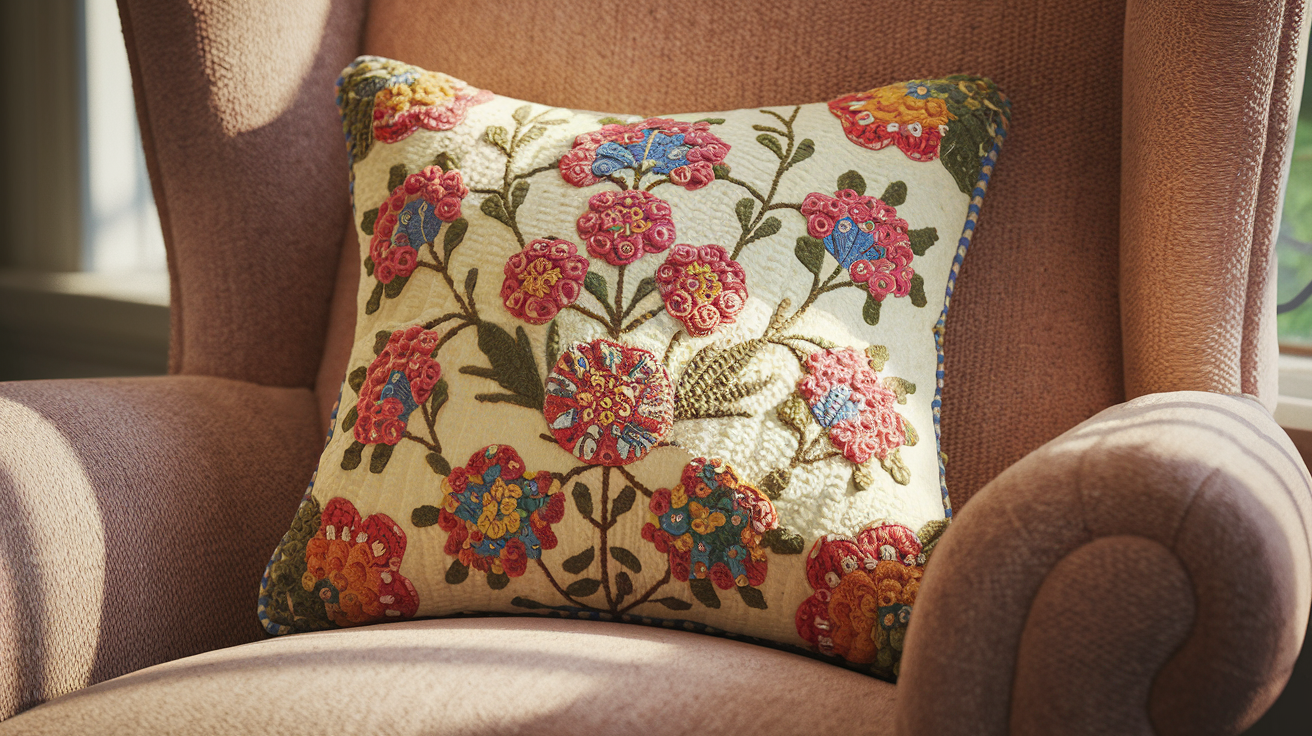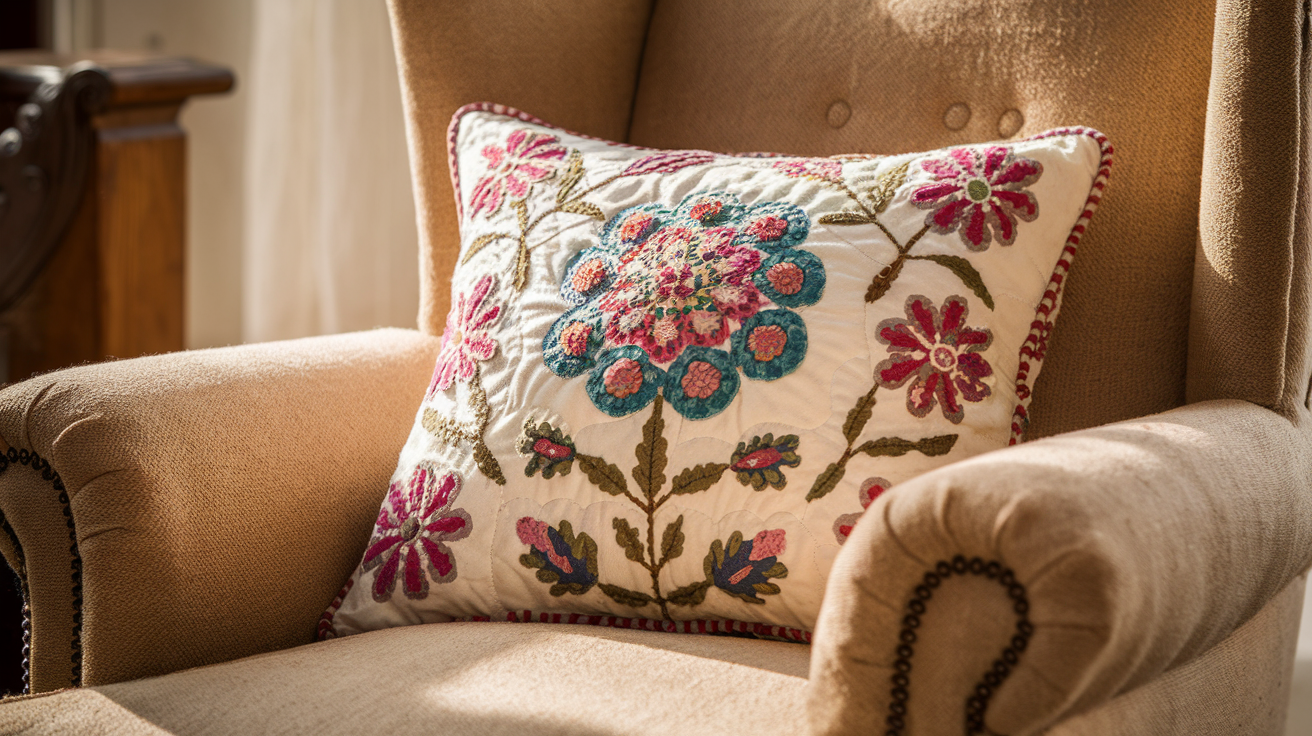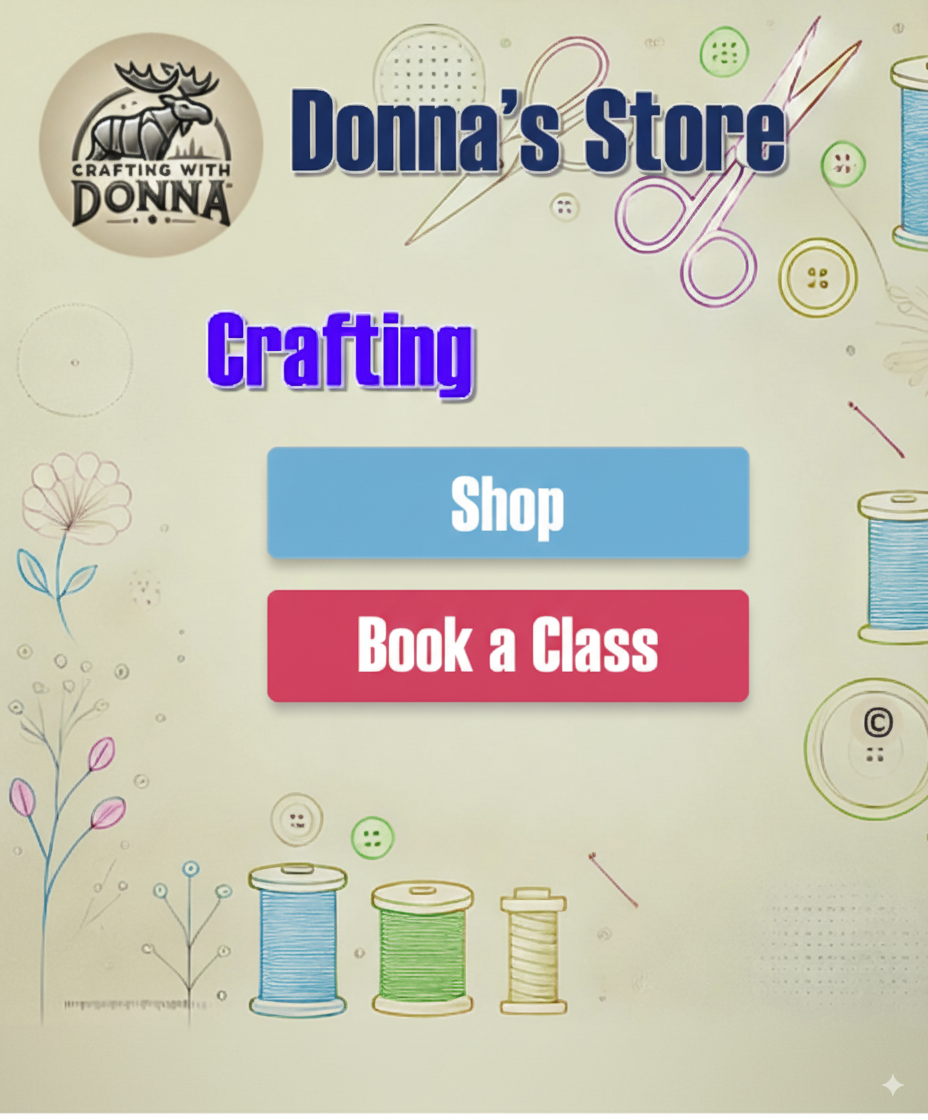How To Make Quilted Pillow Cushion Patterns For Home Decor

Quilted pillow patterns offer a fantastic way to inject personality and tactile comfort into any living space, elegantly merging practical textile crafts with captivating visual design. Whether your preference leans towards the crisp precision of patchwork techniques or the cozy feel of modern quilting, a few essentials—fabric, quilting batting, a sewing machine, and a pillow insert—are all that’s needed to embark on this creative journey.
Begin by selecting fabric selection in hues and patterns that truly reflect your individual style; foundational blocks such as halfsquare triangles or log cabin blocks serve perfectly as starting points for both novice and experienced crafters.
Explore convenient envelope closures for straightforward assembly or opt for sleek zipper finishes to achieve a polished, professional look.
To elevate your creations, consider adding creative embellishments like appliqué, delicate ruffle trims, or classic piping accents, all of which showcase your distinctive touch and make each piece an ideal accent for sofa pillows, chair cushions, or elegant bedroom decor.
Choosing fabric selection for quilts
Fabric selection for quilts is paramount for establishing both the visual texture and the enduring quality of your handcrafted items, laying the groundwork for unique cushion designs and pieces built for longevity. Breathable cotton fabrics are frequently the top choice among crafters, offering a pleasing softness and robust strength, which makes them perfectly suited for DIY decor applications and items intended for frequent use.
Prewashing fabrics prior to the cutting and sewing process is an indispensable step, effectively preventing any unforeseen shrinkage or unwanted color bleeding during subsequent laundering cycles—when in doubt about a fabric’s colorfastness, it is always wise to test a small swatch using a colorsafe detergent. For visually engaging patchwork, successfully combine solid fabrics, vibrant print fabrics, and interesting textured fabrics to create distinct surface aesthetics with every pillow cover you fashion.
Thoughtfully select materials that harmonize with your existing interior styling; incorporating leftover fabric scraps or repurposing older materials is a wonderfully sustainable method for waste reduction and for imbuing your sewing projects with a truly personalized character.
The Importance of Fabric Properties
Fabric selection for quilts deeply influences the final feel and structure of your projects, impacting how the quilted pillow patterns drape and wear over time.
Breathable cottons are celebrated for their comfort and resilience, making them an excellent foundation for custom designs.
Applying the practice of prewashing fabrics is essential to mitigate potential shrinkage and to ensure color stability through future laundering tips; you can easily test a small sample with a colorsafe detergent if there are any concerns about the dye’s hold. The precise choice of materials directly affects the quilt’s overall drape and its inherent durable construction, setting the stage for beautiful cushion covers.
Creating Visual Interest with Fabric Combinations
Fabric selection for quilts allows for immense creativity, where mixing solid fabrics, bold print fabrics, and diverse textured fabrics can result in truly unique surface aesthetics for your pillow covers.
This deliberate combination of textures and patterns is key to achieving eye-catching cushion designs that stand out. For those drawn to geometric motifs or personalized style, consider using these varied textiles to craft intricate quilting blocks.
The thoughtful interplay of different fabric types enhances the visual appeal and adds depth to the overall textile design of your handmade items, making each piece a statement of your craft.

Mastering Patchwork Techniques for Pillows
Patchwork techniques for pillow construction build on quilt piecing, focusing on smaller, precise seams for a neat finish, and building on quilt piecing with fabric scraps is a great way to start. Accurate cutting is paramount for perfectly aligned points, contributing to the overall aesthetic of your custom designs and supporting waste reduction.
Practice mitering corners for a professional look, a key skill in achieving a polished edge on your cushion covers.
Consistent seam allowance is essential for durable construction, ensuring your patchwork and quilting blocks create a strong foundation for your pillow covers.
These techniques, combined with careful fabric selection, pave the way for impressive DIY decor and beautiful handmade gifts.
Key Patchwork Elements
Fabric selection influences the final look, with textured fabrics, print fabrics, and solid fabrics offering diverse visual appeal for your interior styling. Creative embellishments like piping accents, ruffle trims, button details, or fabric yoyos can add unique textures and personality to your textile crafts.
Border designs and trim options, alongside various binding methods and pillow inserts, all contribute to a truly custom piece. Easy assembly of quilting blocks, whether log cabin blocks or half-square triangles, is achievable with practice, leading to a professional finish on your sofa pillows or chair cushions.
Exploring Modern Quilting Styles
Modern quilting styles move beyond traditional patterns, emphasizing bold colors and geometric designs for striking home decor accents.
Minimalism and negative space are hallmarks, drawing attention to unique textures achieved through improvisational piecing with fabric scraps.
This approach often uses striking color combinations and allows for personalized style in your DIY decor, perfect for accenting bedroom decor or bench seating.
Creative inspiration fuels modern pillow inserts, whether you prefer solid fabrics or vibrant print fabrics. Incorporate crosshatch patterns or straight-line quilting for added dimension and visual interest, elevating your cushion designs.
Innovating with Modern Aesthetics
Modern quilting, a vibrant part of textile design, brings a fresh perspective to traditional quilting techniques, transforming them into unique surface textures.
Think of using fabric scraps for improvisational piecing, creating a freeform aesthetic that stands out. Striking color combinations are often a key feature, making your work a statement piece.
Consider incorporating geometric motifs like half-square triangles or log cabin blocks in new and unexpected ways.
The use of negative space allows your chosen elements to breathe, enhancing the overall visual impact of your quilted pillow patterns.
This evolution of quilting techniques offers ample opportunity for personalization, transforming everyday items into art. Creative embellishments, such as appliqué embellishments or unique border designs, contribute to this distinctive look, making each piece a reflection of individual taste.
From simple strip piecing projects to more complex arrangements, modern quilting offers a playground for innovation in crafting and upholstery.
Key Principles of Patchwork Pillow Creation
- Accurate cutting of fabric is crucial for perfect alignment of points in custom pillow designs.
- Consistent seam allowance ensures the durability and strength of patchwork and quilting blocks used in pillow covers.
- Fabric selection, including textured, print, and solid fabrics, significantly influences the visual appeal of interior styling.
- Creative embellishments such as piping, ruffles, or button details can add unique textures and personality to textile crafts.
Crafting Beautiful Cushion Designs
Quilted pillow patterns offer a fantastic avenue for creative expression in home decor. Crafting unique cushion designs involves more than just stitching fabric together; it’s about bringing personality and texture into your living spaces.
Fabric selection plays a paramount role here, allowing for a dynamic interplay of solids, prints, and varied textures like plush velvets or natural linens, catering to both aesthetic appeal and tactile experience.
Exploring innovative shapes beyond traditional square pillows or bolster pillows can transform a simple cushion into a striking focal point for your DIY decor.
Experimentation with techniques such as appliqué embellishments, intricate embroidery, or even creative fabric manipulation can introduce captivating visual interest. Selecting the right decorative elements depends heavily on the cushion’s intended use, ensuring that style harmonizes with practicality for a beautiful and enduring finish.
This thoughtful approach to design ensures each piece is both functional and a statement of personal style.
Adding Piping Accents and Trims
Piping accents provide an exceptionally effective method for enhancing the visual definition of your pillow edges and seams. This technique imbues handmade pillow covers with a polished, tailored appearance, giving them a distinct edge over simpler designs.
Piping accents frame patchwork techniques beautifully, creating crisp, eye-catching lines that draw attention to the overall cushion designs.
Consistency in the piping cord thickness is key; ensuring it remains even around curves and corners guarantees a smooth, professional look, elevating the entire piece.
Trim options, like delicate ruffle trims or eye-catching border designs, can further amplify visual interest, offering a beautiful contrast or complement to your main fabric. Combining these finishing touches with other creative embellishments, such as charming button details or playful fabric yoyos, ties the entire project together.
Such considered details ensure your creation not only stands out but also offers a welcoming and beautiful addition to any room. This meticulous attention to finishing details is central to creating truly memorable textile crafts, transforming simple pillow covers into works of art.
| Design Element | Impact on Cushion | Key Consideration |
|---|---|---|
| Quilted Pillow Patterns | Creative expression in home decor | Bringing personality and texture |
| Fabric Selection | Dynamic interplay of solids, prints, and textures | Aesthetic appeal and tactile experience |
| Piping Accents | Enhances visual definition and provides a tailored appearance | Consistency in piping cord thickness |
| Trim Options & Embellishments | Amplify visual interest and tie the project together | Harmonizing style with practicality |
Finishing with Envelope Closures
Envelope closures present a practical and stylish alternative to zippers, simplifying pillow cover construction and allowing for effortless pillow insert removal. This efficient method is a common and effective finishing touch, facilitating washing and care routines.
For example, quilted pillow patterns benefit from this design choice, ensuring a neat look.
Proper construction requires ample overlap for a secure fit, a key aspect of the envelope closure technique.
A practical and stylish alternative to zippers, envelope closures are easy to make and allow for easy pillow insert removal. Ensure ample overlap for a secure fit.
This method simplifies washing and care. It’s a common and efficient finishing touch.
Seamless Assembly with Envelope Closures
Envelope closures streamline the process of creating beautiful cushion designs.
You can achieve a professional finish without the complexity of zippers, making DIY decor projects more accessible.
This technique also aids in waste reduction by utilizing fabric scraps effectively.
Ensuring a Secure and Neat Finish
To guarantee a snug fit, ample overlap is fundamental for envelope closures. This ensures your pillow covers remain in place and the insert is fully concealed.
Simplified Care and Maintenance
The ease of removing pillow inserts is a significant advantage of envelope closures, simplifying washing and general upkeep for your handmade items. This makes them ideal for seasonal accents or items that require frequent cleaning.
Patchwork techniques, when combined with envelope closures, offer a blend of tradition and functionality.
The overlap in an envelope closure is key to its success.
This finishing touch seamlessly leads into the world of unique pillow pattern creation.
Creating Unique Pillow Patterns
Quilted pillow patterns can become standout pieces when you explore inventive approaches such as curved seams, trapunto, or textured fabric manipulation. By thoughtfully arranging patchwork techniques, you’ll discover how negative space contributes to graphic impact and modern quilting appeal, whether working with geometric motifs or freestyle designs.
Unique textures and thoughtful fabric selection encourage personal expression; try mixing solid fabrics, bold prints, and unexpected trims. Every new experiment expands your creative inspiration, making each cushion cover a testament to both your skill and interior styling vision.
Beyond standard shapes, explore curved seams, trapunto, or dimensional elements.
Consider how pattern influences the overall design and feel.
Think about the negative space created by your pattern choices.
Unique patterns can become a focal point of any seating arrangement.
Exploring Pattern Innovation
Quilted pillow patterns can transcend the ordinary by incorporating elements like curved stitches or dimensional fabric manipulation. This approach to textile crafts allows for truly custom designs.
Dimensionality in Cushion Designs
Appliqué embellishments or other dimensional details can transform simple square pillows into captivating focal points for your sofa pillows or bench seating arrangements.
The Impact of Negative Space
Patchwork techniques, when strategically employed, highlight the significance of negative space in creating striking graphic impacts.
This is particularly evident in modern quilting styles and bold geometric motifs.
Personalized Style Through Fabric Selection
Thoughtful fabric selection, incorporating textured fabrics, print fabrics, and solid fabrics, empowers individual expression and creates unique textures.
Fabric manipulation techniques can elevate basic cushion covers, offering a distinct visual and tactile experience. Experimenting with various quilting techniques adds depth to your creations.
- Envelope closures offer a practical and stylish alternative to zippers for pillow covers.
- This method simplifies pillow cover construction and allows for effortless pillow insert removal, aiding in washing and care.
- Ample overlap is a key aspect of envelope closure technique for a secure fit.
- Envelope closures streamline the creation of cushion designs, making DIY decor projects more accessible and contributing to waste reduction.
Selecting Quilting Batting for Plushness
Quilting batting selection is central to achieving plush comfort and ideal shape retention in custom quilted pillow patterns and cushion designs. Cotton batting provides a natural feel and breathable softness that improves with use, though it may show slight wrinkling over time[3][2].
Polyester batting is hypoallergenic, offers greater loft, and resists folding, making it perfect for pillows that need to maintain their structure and remain fluffy[1][2].
For those seeking a balance, cotton/poly blends combine softness and resilience[1].
Choosing thicker batting enhances plushness and supports shape integrity, especially for prominent cushion patterns. Creative quilting techniques such as dense stitching further amplify plush effects while pre-washing the batting helps prevent shrinkage and preserve pillow form.
Selecting the right batting type and loft is a crucial step for comfort, durability, and professional pillow finishes in DIY decor projects.
Crafting Distinctive Pillow and Cushion Designs
Quilted pillow patterns and cushion designs offer a fantastic avenue for home decor.
Quilting techniques, from straightline quilting to freemotion quilting, each impart unique surface textures.
Patchwork techniques, incorporating elements like halfsquare triangles and log cabin blocks, add visual interest and depth with geometric and modern motifs.
For added personality in your DIY decor, consider creative embellishments.
Appliqué embellishments, intricate piping accents, playful ruffle trims, charming button details, and whimsical fabric yoyos can transform a simple pillow cover into a statement piece.
.
Border designs and various trim options can further frame your patchwork or introduce contrasting elements. The finishing touches often involve deciding between envelope closures, which offer easy assembly and no zippers required, or installing zipper finishes for a more professional look and easy removal for cleaning[3][5].
When it comes to fabric selection, mixing solids, prints, and textured fabrics allows for both modern and traditional aesthetics.
Effectively utilizing fabric scraps and stash helps reduce waste and injects a delightful variety into your projects.
These covers can be sized for chair cushions, sofa pillows, bench seating, or general bedroom decor, making them versatile for any space. Finished pieces also serve as excellent handmade gifts or personalized seasonal accents.
Creative inspiration abounds, whether you’re exploring modern quilting or traditional quilting styles. Detailed photo tutorials and videos are readily available to support a wide range of skill levels[2][3][4][5].
Experimenting with different shapes, such as bolster pillows, square pillows, rectangular pillows, or even round pillows, adds another layer of design possibility.
Reinforcing corners and seams ensures durable construction for your creations.
For longevity, remember the importance of prewashing fabrics with a colorsafe detergent; reshaping after laundering helps maintain the pillow’s form.
Key Information for Pillow and Cushion Crafting
- Polyester batting is hypoallergenic and offers greater loft, making it ideal for pillows that need to maintain their fluffy structure.
- Patchwork techniques, using elements like halfsquare triangles and log cabin blocks, add visual interest and depth to pillow designs.
- Embellishments such as piping, ruffle trims, button details, and fabric yoyos can transform a simple pillow cover into a statement piece.
- Envelope closures provide easy assembly without the need for zippers, while zipper finishes offer a more professional look and easy removal for cleaning.




